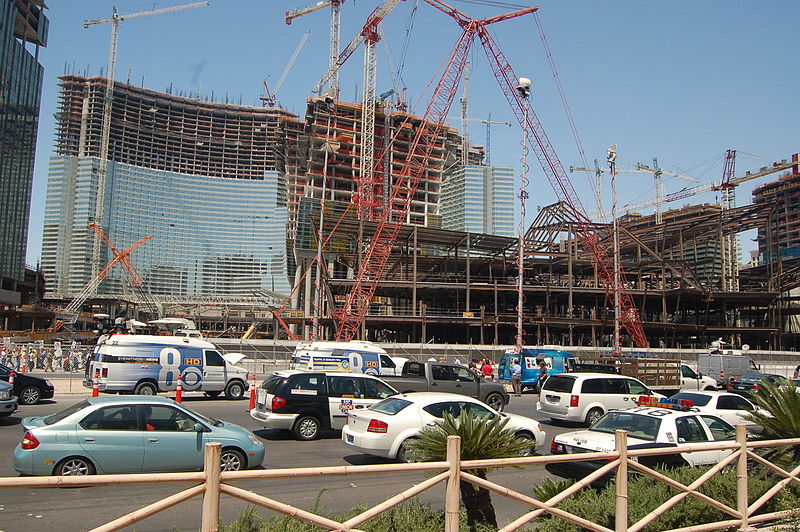The Design-Build Institute of America (DBIA), the only organization that defines, teaches and promotes best practices in design-build, has released new research findings indicating that for the first time more than half of projects above $10 million are being completed through design-build project delivery.
The newly released study confirms that the use of design-build has remained steady since its growth spurt at the end of the last decade, and also that Oregon and the Military sector are leading with the most dollars being spent on design-build projects.
“The growing use of design-build is not surprising,” says Lisa Washington, CAE, CEO/Executive Director of DBIA. “Throughout the last five years, and even through the recession, we’ve seen a large increase in demand for information and training on design-build best practices. Owners from all sectors have been turning to design-build delivery because they recognize the inherent value it brings to any project in any sector of any size.”
Shortly before the economic downturn a little over five years ago, the use of design-build spiked from 29% of the nonresidential market in 2005 to 36% in 2008. Throughout the recession period, design-build use continued to grow, and now with the economy stable and slowly recovering, the use of design-build has held steady at around 40% for the last three years.
RSMeans analyzed detailed data on nearly a million construction projects, state by state, and found that the West Coast is where design-build is the most prevalent. In fact, 70% of construction dollars being spent in Oregon are on design-build projects. California is the second highest at 59% and Washington the third highest state at 56%.
When looking at specific sectors, the military uses design-build on 81% of projects. However, even when military projects are taken out of the equation, Oregon is still the top state due to multifamily residential and industrial sectors’ preference for design-build. Those two industries also lift Michigan to the second place spot in the list of states doing the most non-military design-build.
“The Reed/RSMeans segmentation analysis now includes nine complete years of actual history, statistically supporting observation of trends at the state and industry sector segment levels,” says Tim Duggan, Director of Custom Solutions, Reed/RS Means, one of North America’s largest information providers to the design and construction industry.
RSMeans’ proprietary database of historical and planning construction projects data served as the basis for the study in addition to the incorporation of other publicly and privately available data sources. A copy of the full report, “Design-Build Project Delivery Market Share and Market Size Report,” is available on DBIA’s web site.
Related Stories
Architects | Jan 10, 2024
Award-winning civic design firm RossDrulisCusenbery joins DLR Group
DLR Group today announced the acquisition of Sonoma, California based civic and public safety design firm RossDrulisCusenbery (RDC). The addition of RDC adds focused design excellence of new building types to DLR Group’s global Justice+Civic studio.
Museums | Jan 8, 2024
Achieving an ideal visitor experience with the ADROIT approach
Alan Reed, FAIA, LEED AP, shares his strategy for crafting logical, significant visitor experiences: The ADROIT approach.
Designers | Jan 8, 2024
DLR Group adds executive leaders
DLR Group Chief Executive Officer Steven McKay, AIA, RIBA, announced new executive leaders for the 100% employee-owned, globally integrated design firm.
AEC Tech | Jan 8, 2024
What's driving the surge of digital transformation in AEC today?
For centuries, the AEC industry has clung to traditional methods and legacy processes—seated patterns that have bred resistance to change. This has made the adoption of new technologies a slow and hesitant process.
K-12 Schools | Jan 8, 2024
Video: Learn how DLR Group converted two big-box stores into an early education center
Learn how the North Kansas City (Mo.) School District and DLR Group adapted two big-box stores into a 115,000-sf early education center offering services for children with special needs.
Green | Jan 8, 2024
DOE releases RFI on developing national definition for a Zero Emissions Building
The Department of Energy released a Request for Information (RFI) for feedback from industry, academia, research laboratories, government agencies, and other stakeholders on a draft national definition for a Zero Emissions Building.
Codes and Standards | Jan 8, 2024
Australia to be first country to ban engineered stone countertops
In 2024, Australia will be the first country to ban engineered stone countertops. The ban came after a years-long campaign supported by doctors, trade unions, and workers over concerns that the material was causing increased silicosis cases among workers cutting and handling it.
Roofing | Jan 8, 2024
Researchers devise adaptive roof tile concept that adjusts to ambient temperatures
Scientists at the University of California Santa Barbara published a paper that proposes adaptive roof tile technology that can adjust to ambient temperatures. Using a wax motor, tiles could switch from a heating or cooling state enabling savings on heating and cooling costs.
MFPRO+ News | Jan 4, 2024
Bjarke Ingels's curved residential high-rise will anchor a massive urban regeneration project in Greece
In Athens, Greece, Lamda Development has launched Little Athens, the newest residential neighborhood at the Ellinikon, a multiuse development billed as a smart city. Bjarke Ingels Group's 50-meter Park Rise building will serve as Little Athens’ centerpiece.
MFPRO+ Special Reports | Jan 4, 2024
Top 10 trends in multifamily rental housing
Demographic and economic shifts, along with work and lifestyle changes, have made apartment living preferable for a wider range of buyers and renters. These top 10 trends in multifamily housing come from BD+C's 2023 Multifamily Annual Report.

















